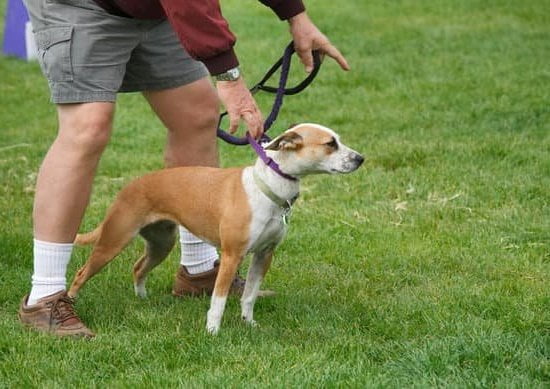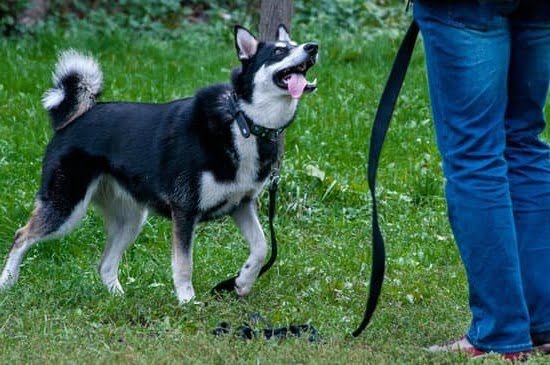Are you wondering how to train your dog to search and rescue? Search and rescue dogs play a vital role in locating missing individuals in various situations, making their training essential for their success in such critical missions. From understanding the importance of search and rescue dogs to navigating the process of certification, this article will provide you with a comprehensive guide on training your furry companion for this noble task.
Search and rescue dogs come in all shapes and sizes, but not every breed possesses the necessary characteristics and traits for this type of work. In this section, we will explore the importance of choosing the right breed based on their natural abilities and temperament.
Additionally, basic obedience training plays a crucial role in building a strong foundation for search and rescue work. This ensures that your dog’s responses are reliable and consistent when it comes to following commands and instructions during missions.
Scent training is another fundamental aspect of preparing a dog for search and rescue work. Dogs have an incredible sense of smell, which can be developed to pinpoint specific scents associated with locating individuals.
As we delve into further sections of this article, we will discuss how to develop your dog’s natural abilities through scent training techniques. With these foundational elements in place, you can begin introducing search and rescue techniques to your dog as they embark on their journey towards becoming a valuable member of a search and rescue team.
Choosing the Right Breed
When it comes to training a dog for search and rescue, one of the most crucial decisions a handler will make is choosing the right breed. Not all dogs are suited for this type of work, so understanding the characteristics and traits that make a good search and rescue dog is essential. Some breeds are known for their exceptional sense of smell, stamina, intelligence, and trainability – all of which are vital for search and rescue work.
First and foremost, a search and rescue dog should possess a strong sense of smell. Breeds such as German Shepherds, Bloodhounds, Labrador Retrievers, and Belgian Malinois are often favored for their olfactory capabilities. These breeds have been selectively bred for generations to excel in tracking scents over various terrains and conditions.
In addition to a keen sense of smell, a successful search and rescue dog must also have the physical stamina to endure long hours of searching and navigating through challenging environments. Many working breeds, including Collies, Australian Shepherds, and Doberman Pinschers, exhibit the endurance required to perform these demanding tasks.
Lastly, intelligence and trainability are crucial traits in a search and rescue dog. Breeds like Border Collies, Golden Retrievers, and Standard Poodles are known for their high levels of intelligence and ability to learn complex commands quickly.
| Breed | Main Characteristics |
|---|---|
| German Shepherd | Strong sense of smell; physical stamina; intelligence |
| Labrador Retriever | Exceptional olfactory capabilities; endurance; trainability |
| Border Collie | High intelligence; quick learning ability; agility |
Basic Obedience Training
During basic obedience training, it is important to use positive reinforcement techniques, such as praise and treats, to encourage desired behaviors. Consistency is key in this process, as dogs thrive on routine and clear expectations. Handlers should be patient and persistent while working with their dogs, understanding that each animal learns at its own pace. By providing structure and consistency in training, handlers set their search and rescue dogs up for success in their future endeavors.
Furthermore, basic obedience training sets the stage for more advanced search and rescue techniques. A well-behaved and obedient dog is better equipped to learn complex tasks related to tracking scents, navigating difficult terrain, and responding to various situations encountered during search operations.
Without a strong foundation in basic obedience, it can be challenging to progress to more specialized search and rescue training effectively. Therefore, investing time and effort into this early stage of training is essential for aspiring handlers of search and rescue dogs.
Scent Training
The Importance of Scent Training
Scent training is vital because it allows the dog to locate individuals who may be difficult to find by other means. Whether a person is lost in the wilderness or trapped under debris, a well-trained search and rescue dog can use their keen sense of smell to pinpoint the individual’s location with remarkable accuracy. This can significantly reduce the time and resources needed to conduct a successful search and rescue mission.
Methods for Scent Training
There are various methods for scent training, but one popular approach is using scent boxes or containers. Handlers can place scented items such as clothing or personal belongings in these containers and hide them in different locations for the dog to find.
As the dog becomes more proficient, the difficulty of the search can be increased by using multiple containers or placing them in more challenging environments. This type of training helps the dog learn to discriminate between different scents and focus on locating the specific target odor.
Consistency and Patience
Consistency and patience are key when it comes to scent training. It’s essential for handlers to remain consistent in their training methods and provide ample opportunities for the dog to practice their scent detection skills.
Additionally, patience is required as dogs may progress at different rates, and some may require more time to fully grasp certain concepts. By being consistent and patient, handlers can help their dogs develop strong scent detection abilities that are crucial for search and rescue operations.
Introducing Search and Rescue Techniques
Once your dog has mastered basic obedience training and scent training, it’s time to introduce them to search and rescue techniques. This phase of training focuses on building the foundational skills necessary for performing successful search and rescue missions.
Start by teaching your dog basic search commands such as “find” and “search.” Use these commands during playtime by hiding a favorite toy or treat, then encouraging your dog to find it with guidance. As they become more proficient, gradually increase the level of difficulty by hiding objects in larger areas or introducing distractions. This will help your dog learn how to focus on the task at hand and ignore potential distractions during real-life search and rescue scenarios.
It’s also important to gradually expose your dog to different environments, surfaces, and weather conditions. This will help them become comfortable working in various settings and develop problem-solving skills when faced with challenging terrain or obstacles. Introducing your dog to these basics will lay the groundwork for more advanced techniques as they progress through their search and rescue training.
| Search Commands | Training Approach |
|---|---|
| “Find” and “Search” | Introduce during playtime with favorite toys or treats |
| Exposure to Different Environments | Gradually introduce various settings, surfaces, and weather conditions |
Advanced Training
Once your dog has mastered the basics of search and rescue training, it’s time to move on to more advanced techniques to further strengthen their skills. This phase of training is crucial in developing the dog’s ability to handle complex search scenarios and challenging environments. Here are some key areas to focus on during advanced training:
- Advanced Scent Discrimination: Teach your dog to differentiate between different scents and recognize the specific scent they are searching for.
- Off-Leash Training: Train your dog to work off-leash while maintaining focus and following commands, which is essential for search and rescue missions where freedom of movement is crucial.
- Problem-Solving Skills: Introduce your dog to various simulated search scenarios that require them to think critically, problem-solve, and make decisions independently.
In addition to these key areas, it’s important to continue reinforcing basic obedience commands and scent training throughout the advanced training phase. Consistent practice and positive reinforcement will help solidify the skills and techniques that are essential for a successful search and rescue team.
As you progress through advanced training, consider working with a professional trainer or joining a search and rescue organization to gain access to specialized resources, expert guidance, and valuable networking opportunities within the search and rescue community. Remember that each dog progresses at their own pace, so be patient, stay consistent with training, and celebrate every milestone achieved along the way.
Equipment and Tools
When training a dog for search and rescue, it is essential to have the right equipment and tools to ensure the safety and effectiveness of the dog during operations. Here are some essential gear that every search and rescue dog should have:
- Harness: A durable and comfortable harness is crucial for search and rescue dogs, as it allows them to be safely tethered to their handler or to be used in rappelling or hoisting operations.
- Tracking Collar: A tracking collar with GPS capabilities can be a lifesaver when searching for a lost individual in rough terrain or wilderness. This device enables handlers to track the dog’s movements and locate them quickly.
- First Aid Kit: Search and rescue dogs are often exposed to challenging environments, so having a well-stocked first aid kit for both the dog and handler is crucial for addressing any injuries or emergencies that may arise during operations.
- Communication Devices: Radios, cell phones, or satellite communicators are essential tools for maintaining communication between the handler, search team members, and emergency responders during search and rescue missions.
In addition to these basics, other specialized equipment such as protective boots, goggles, backpacks, and flotation devices may also be necessary depending on the specific search and rescue scenarios the dog will encounter. It is important for handlers to regularly inspect and maintain all gear to ensure its reliability when it counts most in real-life search and rescue situations.
Safety and Ethical Considerations
Physical Health and Well-Being
When training a dog for search and rescue, it is crucial to prioritize their physical health and well-being. This means ensuring that the dog is in good overall health before commencing any training. It is essential to consult a veterinarian to assess the dog’s fitness for search and rescue work. Proper nutrition, regular exercise, and preventative veterinary care are also important factors to consider in maintaining the dog’s physical well-being.
Mental and Emotional Well-Being
In addition to physical health, the mental and emotional well-being of search and rescue dogs should not be overlooked. Dogs used in search and rescue operations often encounter stressful and challenging situations, so it is important for handlers to be attuned to their canine partner’s mental state.
Training should incorporate positive reinforcement methods that build the dog’s confidence while minimizing stress. Handlers must also monitor their dogs for signs of burnout or fatigue, providing adequate rest periods during training sessions.
Consideration for Others
Ethical considerations also extend to the safety and well-being of others involved in search and rescue operations. Handlers need to ensure that their dogs are properly trained not only to locate missing individuals but also to approach them safely without causing harm.
Moreover, search and rescue teams must adhere to local laws, regulations, and guidelines regarding public safety during operations. Respect for private property, environmental conservation, as well as cooperation with law enforcement officials are integral components of ethical conduct in search and rescue endeavors.
Certification and Recertification
Becoming a certified search and rescue team involves a series of steps and requirements that handlers and their dogs must complete. The certification process ensures that the team is equipped with the necessary skills and abilities to effectively carry out search and rescue missions. It is important to note that certification requirements may vary depending on the organization or agency overseeing the certification process, so it is crucial for handlers to research and understand the specific guidelines applicable to them.
Typically, the certification process includes a combination of written exams, practical assessments, and field evaluations. Handlers may be required to demonstrate their knowledge of search and rescue techniques, as well as their ability to effectively communicate with their dog during a simulated search mission. Additionally, dogs will need to showcase their proficiency in scent detection, obedience, agility, and other essential skills relevant to search and rescue operations.
After successfully completing the initial certification process, handlers and their dogs are typically required to undergo recertification on a regular basis. This ensures that they maintain their skills and remain up-to-date with any changes in protocols or techniques within the search and rescue community. Recertification often involves retesting both the handler’s knowledge and the dog’s abilities, providing evidence of consistent training and dedication to maintaining high standards within the search and rescue field.
Conclusion
In conclusion, the bond between a handler and their search and rescue dog is truly remarkable. Through dedication, hard work, and training, this partnership becomes an invaluable tool in saving lives and providing assistance in times of need.
The connection formed between a handler and their canine companion goes beyond just training; it is based on trust, understanding, and mutual respect. It is a bond that showcases the incredible teamwork and capabilities of both human and animal working together toward a common goal.
As search and rescue teams continue to play a vital role in emergency responses, the importance of properly trained dogs cannot be overstated. These loyal companions possess natural abilities that can be honed through specialized training, making them an indispensable resource in locating missing persons or providing aid in various scenarios. The commitment to thorough training, safety precautions, and ethical considerations ensures that both the dog and others involved are well cared for throughout their service.
The journey of becoming a certified search and rescue team is not without its challenges, but it is incredibly rewarding. The sense of accomplishment when completing certification requirements highlights the dedication put into developing the skills needed for search and rescue missions.
As handlers celebrate this achievement alongside their canine partners, they also acknowledge the responsibility that comes with being part of such an important endeavor. The bond between handler and search and rescue dog is truly something to be celebrated as they continue to make a difference in their community.
Frequently Asked Questions
Can My Dog Be Trained as a Search and Rescue Dog?
Yes, many dogs can be trained to become search and rescue dogs with the right training, temperament, and skills. Breeds commonly used for this purpose include German Shepherds, Labrador Retrievers, Belgian Malinois, and Bloodhounds.
It’s important to work with a professional trainer or organization that specializes in search and rescue dog training to ensure your dog receives the proper guidance and instruction.
What Is the Easiest Dog to Train for Search and Rescue?
The easiest dog to train for search and rescue will depend on various factors including the individual dog’s personality, energy level, intelligence, and willingness to learn. Generally speaking, breeds like Labrador Retrievers are often considered easier to train due to their high intelligence, strong work ethic, and eagerness to please their owners.
However, any breed or mixed breed that demonstrates the necessary traits can potentially excel in search and rescue training.
How Do I Teach My Dog to Search and Find?
Teaching a dog to search and find involves basic obedience training such as teaching them commands like “search,” “find,” “stay,” “come,” and others that are essential for search and rescue work. It also involves specific scent detection training which can be conducted using toys or scented items hidden in different locations for the dog to find.
Positive reinforcement through treats or affection is used to reinforce successful searches and finds. Consistent practice, patience, and a calm approach are key when teaching a dog these important skills.

Welcome to the blog! I am a professional dog trainer and have been working with dogs for many years. In this blog, I will be discussing various topics related to dog training, including tips, tricks, and advice. I hope you find this information helpful and informative. Thanks for reading!





